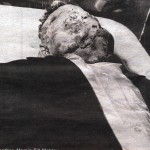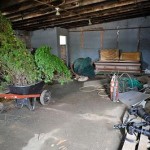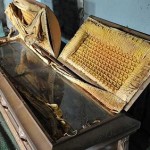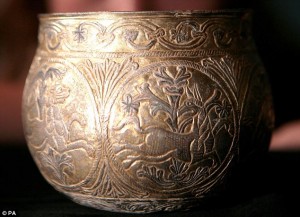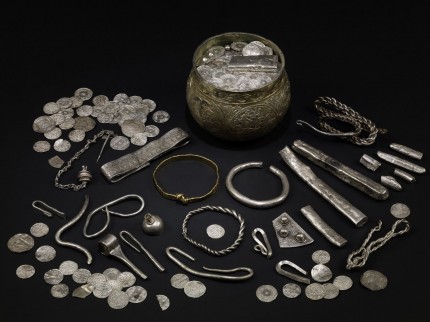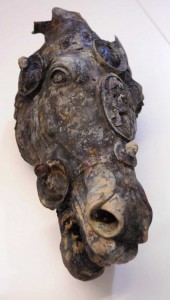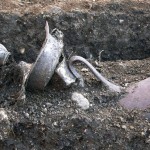 Archaeologists excavating the ruins of Aigai, the royal seat of Macedonian kings like Alexander the Great and his father, Philip II, have uncovered two large silver vessels, one of which contains human remains.
Archaeologists excavating the ruins of Aigai, the royal seat of Macedonian kings like Alexander the Great and his father, Philip II, have uncovered two large silver vessels, one of which contains human remains.
This is the second time bones have been found in containers in the middle of town rather than in the nearby cemeteries. Last year the bones were found along with a gold wreath. This time, in a handsome silver vessel similar to others found in the royal tumulus decades ago.
So clearly the people re-interred in these places were wealthy, possibly Macedonian aristocrats, possibly even members of the royal family.
Archaeologist Stella Drougou said the new find is “very important, as it follows up on last year’s.”
“It makes things very complex,” she said. “Even small details in the ancient texts can help us solve this riddle. We (now) have more information, but we lack a name.”
Drougou told The Associated Press that the fact the funerary urns were not placed in a proper grave “either indicates some form of punishment, or an illegal act.”
“Either way, it was an exceptional event, and we know the history of the Macedonian kings is full of acts of revenge and violent succession.”
The remains in the silver vase have not yet been analyzed, so we don’t know the date, gender, age of the deceased.
One of the excavators speculates that the bones found last year belonged to Alexander the Great’s illegitimate son, Heracles. He was assassinated and buried in a secret location during the wars of succession after Alexander’s death.
There’s no way to know for sure, though. All we know is they were the bones of a teenaged male, but without an inscription or some other specific evidence of identity, speculation is all we’ve got.

